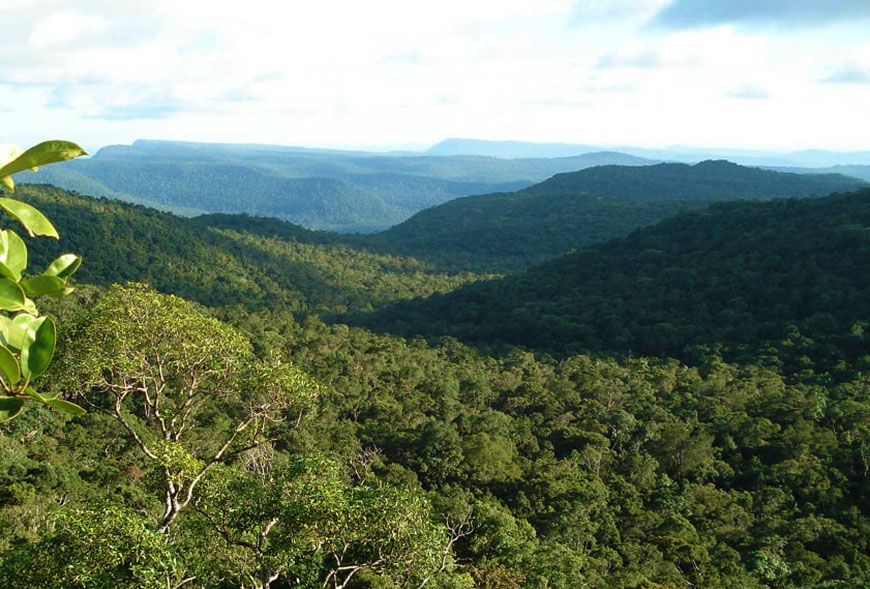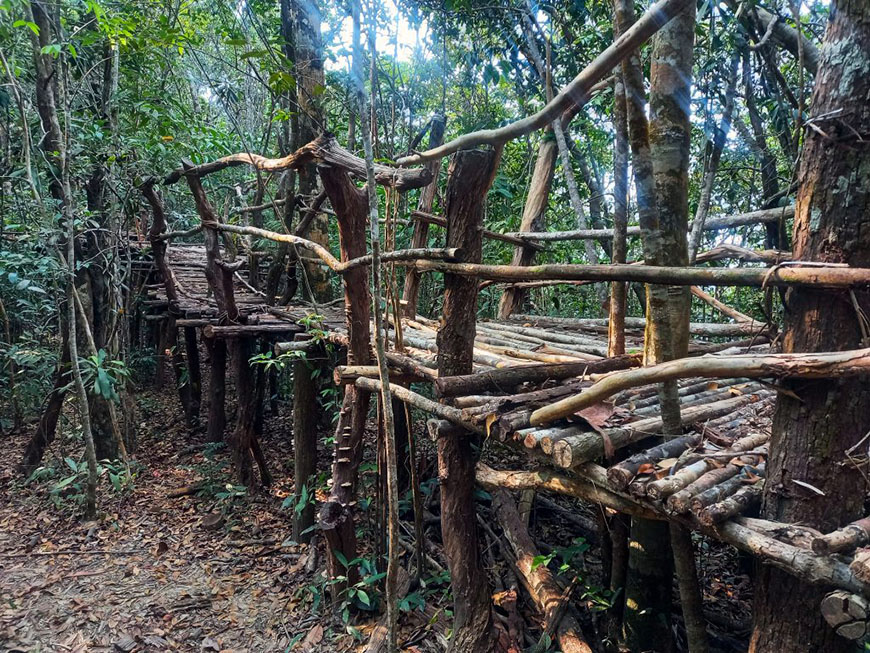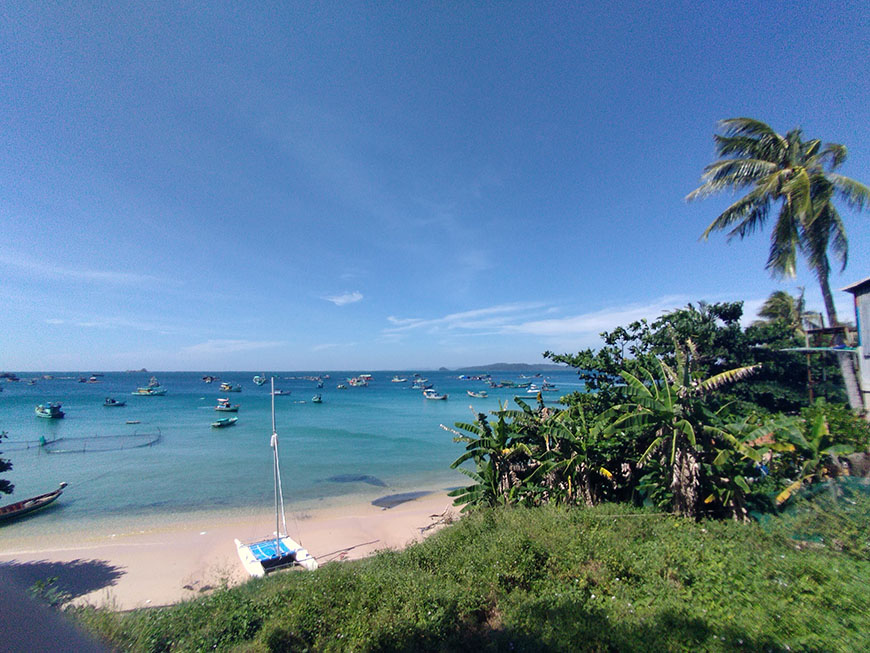Phu Quoc National Park, a true natural treasure nestled on Vietnam's largest island, is a must-visit destination for adventure and nature lovers. This ecological sanctuary, recognized by
UNESCO as a biosphere reserve, impresses with the diversity of its ecosystems, the richness of its biodiversity, and its incredible tourism potential.
Overview of Phu Quoc National Park
Location and history
The history and geography of Phu Quoc National Park are intimately connected to the island on which it is located. Nicknamed the "Emerald Island," Phu Quoc is situated in the
Kiên Giang province, southwest of Vietnam, off the fertile region of the
Mekong Delta. The island lies in the
Gulf of Thailand, a geographical position that directly influences the richness of marine life and coastal biodiversity in the park.
Phu Quoc Island is relatively isolated from the mainland, located about 45 km west of the city of Hà Tiên and 120 km from the city of Rach Gia. This isolation has fostered the development of
unique biodiversity. Interestingly, the island is only about 4 km from Cambodia, suggesting potential ecological links and the presence of shared species between the two territories.
The national park covers approximately 70% of the island, representing an area of 31,422 hectares. It mainly extends over the northern and northeastern parts of the island, less developed areas that have allowed for better preservation of its natural state. The park's landscape is characterized by hills and mountains, dominated by
Núi Chúa (Chua Mountain), which rises to 565 or 603 meters above sea level (depending on the measurement methods). This highest point offers breathtaking views of a dense network of rivers and streams, including the Rach Cua Can River, the most significant on the island. Established in 2001, the park is divided into strict protection, ecological restoration, and service zones, to reconcile conservation and human activities.
 Panoramic view of Phu Quoc National Park - Internet
Panoramic view of Phu Quoc National Park - InternetExceptional biodiversity
The park is home to an impressive biodiversity, with over 1,000 plant species and a rich variety of fauna. Mammals, reptiles, birds, and marine fish can be found here. Among the iconic species are the Phu Quoc crested argus, endangered primates, and rare birds such as the black-faced spoonbill and the red-billed blue magpie. The marine ecosystems are also noteworthy, with coral reefs housing over 100 species of hard corals and 62 species of algae. The local flora includes 12 endemic plant species, such as the Phu Quoc Cu Den and the Phu Quoc Diep Ha Chau. The park is also proud of its six ancient trees recognized as heritage trees of Vietnam, including Kơ Nia and Hopea Pierrei.
Adventures in the heart of Phu Quoc National Park
Phu Quoc National Park is a true playground for adventurers, offering a variety of activities to explore its diverse landscapes.
 Hiking Trails in Phu Quoc National Park - Internet
Hiking Trails in Phu Quoc National Park - InternetHiking and snorkeling
The park's hiking trails allow you to immerse yourself in the wild beauty of Phu Quoc, with options for all skill levels.
- ✓ For walkers: The Da Ban Stream and Suoi Tien trails are perfect for an easy or moderate hike. The former will lead you to a refreshing waterfall through lush vegetation, while the latter, more accessible, is suitable for beginners and families, with camping areas available.
- ✓ For adventurers: Known for its challenging terrain, this 7.2 km (2.5 hours) track is a favourite among adventure enthusiasts. The Thay Tu Waterfall Trail, the park's longest, will take you through streams and reveal pristine landscapes.
- ✓ For explorers: The Ganh Dau trail will immerse you in the jungle, discovering century-old trees, while the Ham Ninh Mountain will offer stunning sea views after a moderate hike (6km – 3 hours). For a motorized adventure, the Rach Tram Jeep Trails are ideal for 4x4 and off-road motorcycle excursions.
- ✓ Ganh Dau, located along the northwest coast of Phu Quoc, is the perfect spot for snorkeling enthusiasts. With calm, clear waters, the cape offers an idyllic setting to explore the underwater world. The coral reefs here are a living tapestry of colors, home to a myriad of marine species thriving in sheltered bays.
 The park is home of six ancient trees recognized as heritage trees of Vietnam - Internet
The park is home of six ancient trees recognized as heritage trees of Vietnam - InternetPractical information for your stay
How to get there
The park is easily accessible by taking a flight to Phu Quoc International Airport, then by taxi or scooter.
Visa
Good news for travelers! Phu Quoc Island benefits from a special visa policy. Foreign nationals can stay on the island for up to 30 days without a visa, provided they do not visit other destinations in Vietnam. To do so, you must have a passport valid for at least six months after the arrival date, a return ticket, and arrive via Phu Quoc International Airport or the brand new Duong Dong International Port.
Best time to visit
The ideal period to visit the park is from November to March when the weather is mild and sunny. The dry season offers optimal conditions for hiking, diving, and all outdoor activities. If you prefer to avoid crowds, the months of November and May can also be pleasant.
Phu Quoc throughout the seasons
Dry Season (November to April): Enjoy sunny, dry weather, perfect for all outdoor activities, with pleasant temperatures and calm seas.
Rainy Season (May to October): Discover the jungle in all its splendor, with lush vegetation, rushing waterfalls, and fewer tourists.
 Ganh Dau Cape, with Cambodia in the background - Mr Linh's Adventures Team
Ganh Dau Cape, with Cambodia in the background - Mr Linh's Adventures TeamAccommodation and dining
Phu Quoc offers a wide range of accommodations, from luxury hotels to eco-friendly bungalows. You can enjoy fresh seafood and Vietnamese specialties in local restaurants or explore markets to discover the island's flavors.
Phu Quoc: An epic adventure awaits
With its unique combination of stunning landscapes, fascinating biodiversity, and thrilling adventures, Phu Quoc National Park promises an unforgettable experience in the heart of Vietnamese nature.